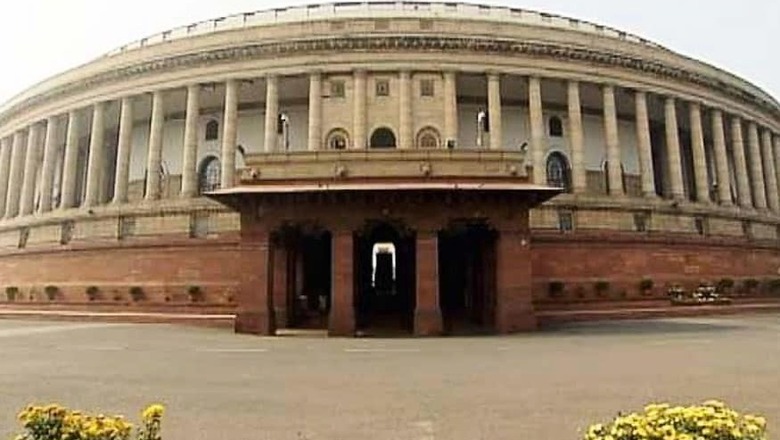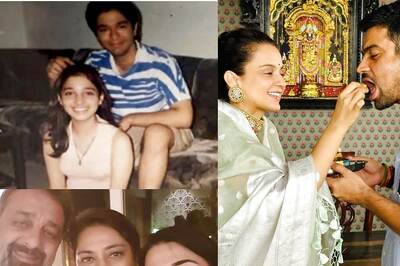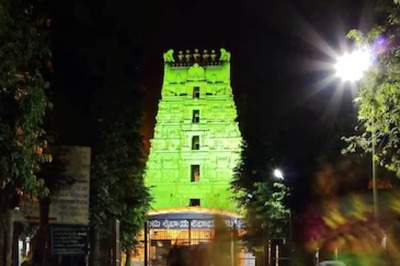
views
The elections for the chair of deputy Rajya Sabha chairperson are set to happen on August 9 and all bets are off on who between a Congress-led opposition and NDA is likely to win. While most experts have so far predicted a win for the opposition, which has a greater strength in the upper house of the Parliament, sources within the NDA have hinted that BJP could spring a surprise.
Soon after a formal announcement was made on the date of elections, the name of Harivansh, a Rajya Sabha member from JD(U) and close aide of Nitish Kumar, started doing the rounds. Harivansh is a former journalist and editor of Prabhat Khabar, a regional newspaper with huge circulation in Bihar and Jharkhand.
Nominating him for the number two post in Rajya Sabha that fell vacant after Congress leader from Kerala, P J Kurien, retired on July 1 could serve at least two purposes for BJP. First, a JD(U) candidate could be more acceptable to some of the big regional parties like BJD and AIADMK who haven’t opened their cards yet. Secondly, it would work as a confidence builder for the BJP–JD(U) ties.
The election will also be a confidence builder for the opposition, which will look to convert this election into a platform on which they could dissolve their differences and come together.
And in this context it would follow the symbolic no-confidence motion that was placed before the Parliament by former BJP ally, the TDP, last month.
To understand where the opposition and the BJP+ are placed, let’s look at the numbers. Rajya Sabha is a 245-member house. One seat is currently vacant. The halfway mark is 122.
NDA currently has 90 MPs in Rajya Sabha, 32 short of the halfway mark - BJP (73), Bodoland People’s Front (1), JD(U) (6), Nominated (4), Naga People’s Front (1), Republican Party of India (A) (1), Shiromani Akali Dal (3) and Sikkim Democratic Front (1).
The joint opposition, on the other hand, has 112 MPs in Rajya Sabha, 10 short of halfway mark. Here is how the numbers stack up for them - Aam Aadmi Party (3), Trinamool Congress (13), Bahujan Samaj Party (4), Communist Party of India (2), Communist Party of India (M) (5), Dravida Munnetra Kazhagam (4), Congress (50), Indian Union Muslim League (1), JD(S) (1), Kerala Congress (M) (1), Nationalist Congress Party (4), Rashtriya Janata Dal (5), Samajwadi Party (13), Telegu Desam Party (6).
This still leaves 42 MPs in the upper house in the unknown camp. These belong to the All India Anna Dravida Munnetra Kazhagam (13), Biju Janata Dal (9), Indian National Lok Dal (1), People’s Democratic Party (2), Shiv Sena (3), Telangana Rashtriya Samithi (6), Yuvajana Sramika Rythu Congress Party (2) and Independent (6).
These parliamentarians could vote one way or the other.
To get the candidate of its choice elected to this chair, the support of AIADMK and BJD will be crucial for the BJP. AIDMK hasn’t made its stand on the elections clear but there are good chances that it would end up voting for the JD(U) candidate.
BJD has a habit of abstaining from such votes, as it did during the no-confidence motion, not taking sides either way.
But if BJP secures the support of these two parties and at least half of the six independent candidates it will be left short of just four votes. Help could come from BJP’s ally in Maharashtra, the Shiv Sena, which has repeatedly made its anti-BJP stand clear. TRS’s 6 MPs would push BJP well past the finish line.
Congress+ on the other hand could with the help of TRS, INLD, and three independent candidates go past the finish line. Though it would also try to woo BJD, in which case it wouldn’t need any additional support from other political parties.
A lot may also depend on the candidate that the opposition decides to field. According to media reports Congress, which has held this chair for last several decades, has agreed to support a non-Congress candidate.
The election is likely to go down to the wire and the victory margin for either camp is unlikely to be significant.


















Comments
0 comment